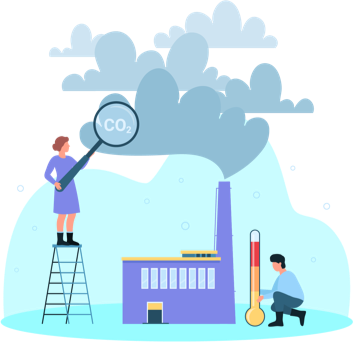Pollution peaks
Pollution peaks generally occur during the winter months or in spring and are the result of increased concentrations of pollutants in the air, such as particulate matter and nitrogen dioxide. The quality of the air we breathe every day plays a decisive role in our health and well-being. Numerous international studies have demonstrated that air pollution has a significant impact on our health. The respiratory system is the first to suffer from the pollutants that enter the body through the air we breathe. The consequences range from temporary ailments to permanent respiratory problems and chronic illnesses. Pollutants contribute to the development of respiratory and cardiac problems, bronchitis, asthma, various allergies and other ailments.
Human activities are the main source of air pollution in large cities. It's all about the way a city operates, its population density, the activities people carry out in a city and its transportation. Although the situation in our region is not as alarming as in other major European cities, it is no less worrying. Brussels has no heavy industry on its territory: atmospheric emissions therefore come primarily from heating installations and also road traffic. Concentrations of pollutants from road traffic are falling sharply. Nevertheless, transport in the Brussels Region remains the main source of nitrogen dioxide and the second largest source of particulate matter, representing a threat to health. "Car-free Sundays" clearly demonstrate the polluting effect of road traffic.
Pollution peaks plan
Pollution peaks, linked to the increased concentration of pollutants in the air, require emergency measures to limit emissions from transport and heating. Brussels' "pollution peak plan" is activated when the concentration of particulate matter and/or nitrogen dioxide in the atmosphere reaches certain thresholds requiring action to be taken. These measures mainly involve reducing emissions from vehicle traffic by limiting speed or even restricting driving, encouraging the use of public transport, and limiting heating or even banning any heating that is powered by wood.
As air quality has an impact on health, informing the public is also crucial. Brussels Environment has a network of measuring points that continuously record the concentrations of various pollutants in the air. Based on these measurement results, an index is calculated that reflects air quality in the Brussels Region in real time.

Useful links
Learn more about how you can prepare in the event of pollution peaks:




